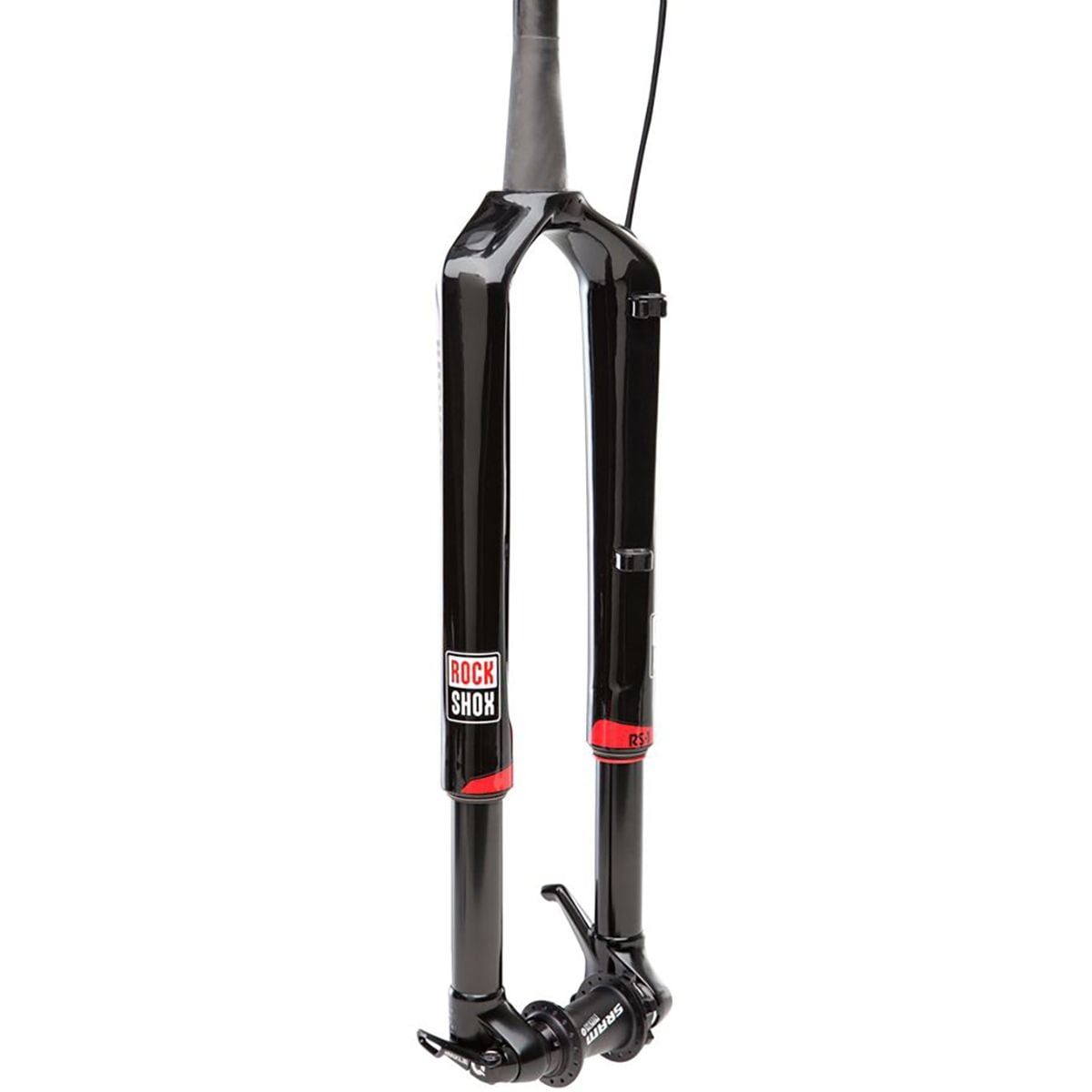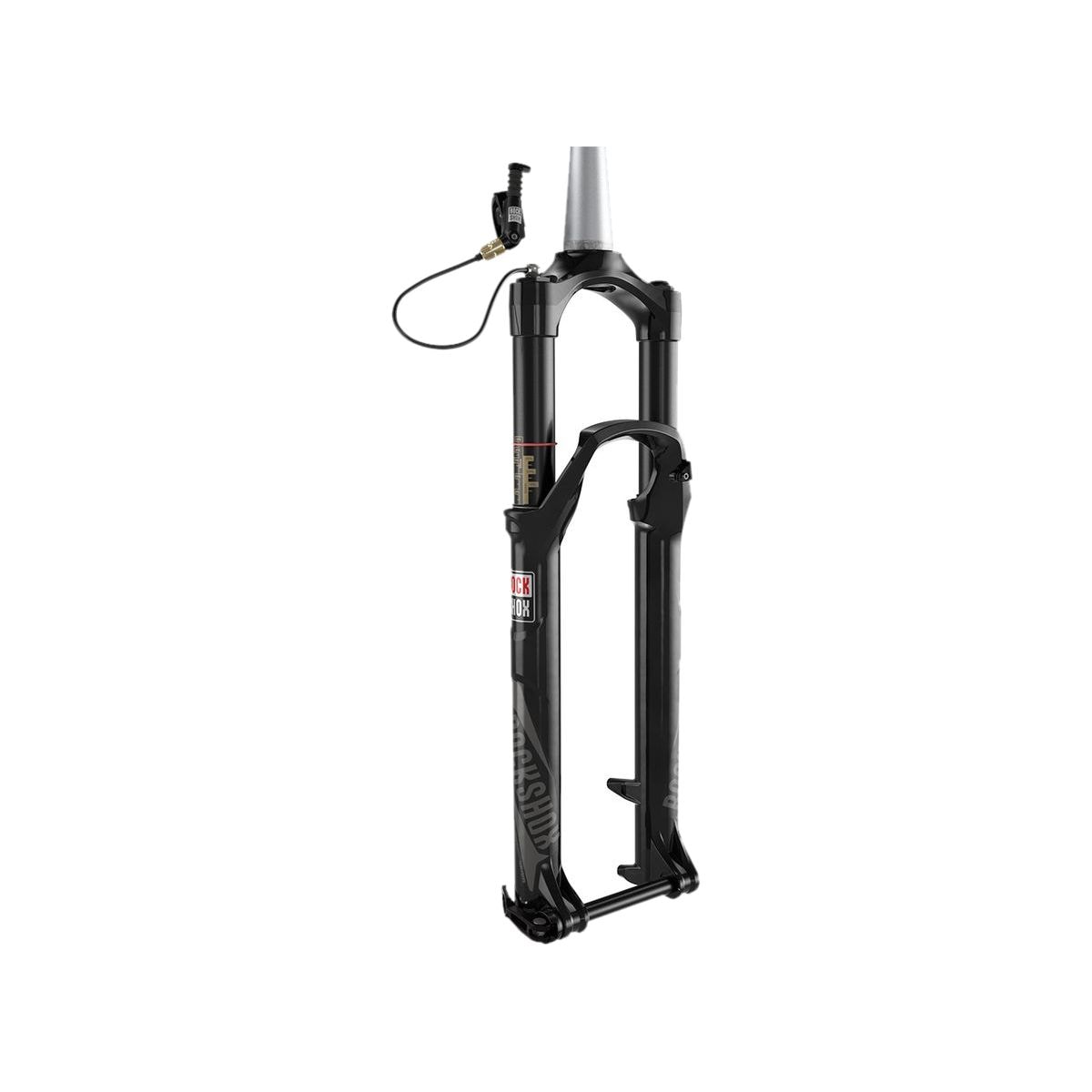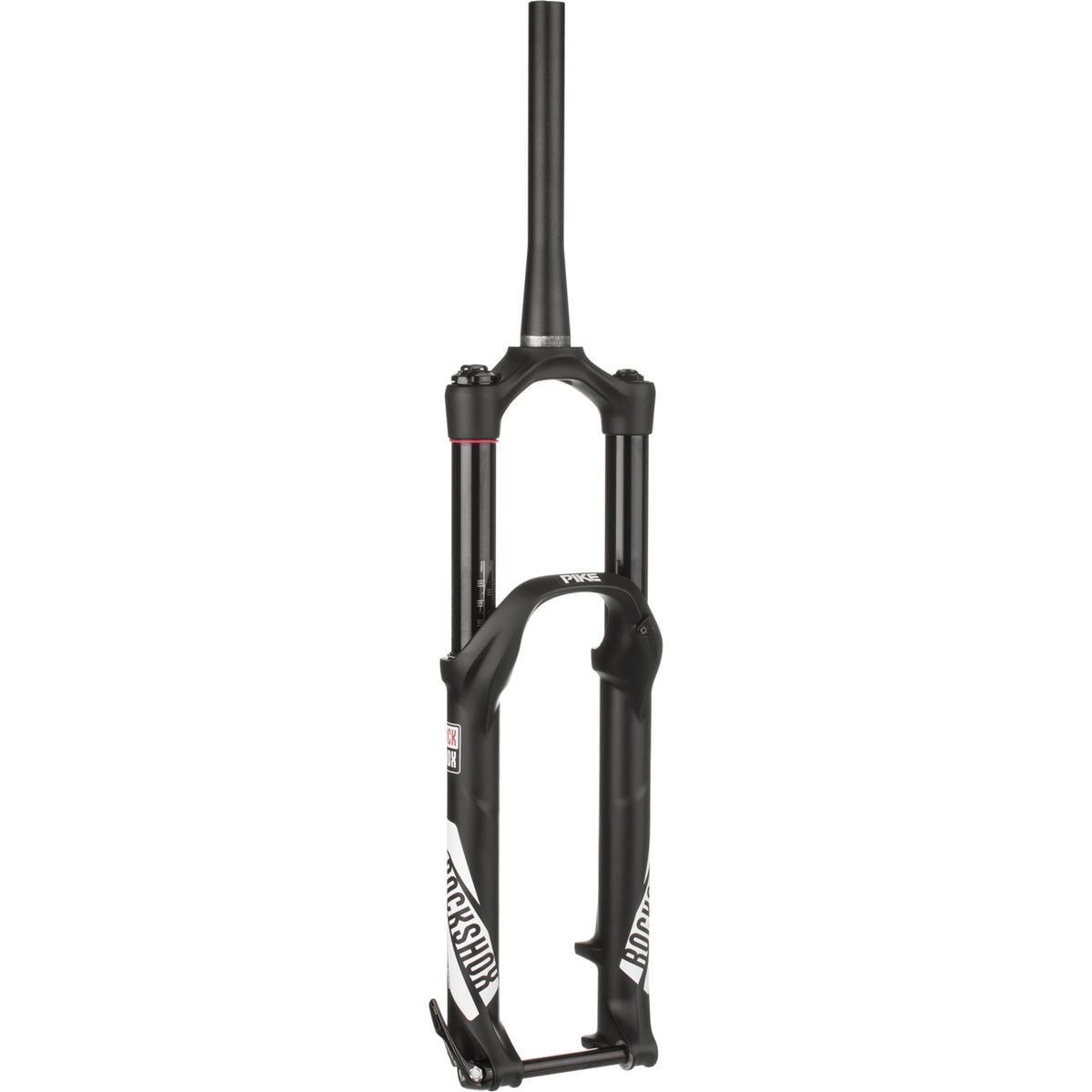
|
For RockShox to name its new top shelf XC fork after the legendary RS 1 the fork that started it all it's immediately evident that SRAM considers the new fork something special. At a glance, you can see that the RS 1 ACS Solo Air 100 is a completely new direction in fork design. The decision to manufacture the fork as part of a forkwheel system, dubbed Predictive Steering, lent to the success of the RS 1 ACS, which was in product development for over three years. RockShox wasn't going to compromise between good and heavy or lightweight and flexible. With advances in carbon technology and a very large and stiff 27mm tubular axle, it didn't have to.The RS 1 ACS is configured to 100mm of travel. Weight wise it is 1646 grams 3. 6lbs incredibly light for an inverted design. Beyond those few standards, RockShox didn't follow any rules when designing the fork. The tapered steerer tube and crown are a single piece of carbon, which is then bonded to carbon legs. The aluminum threads house the new remote lockout Accelerator cartridge damper and Solo air spring. Moving down from the carbon crown and legs, the Fast Black coated stanchions are 32mm wide. Because of the inverted nature of the fork, the stanchions slide effortlessly the oil, being above the bushings, provides constant lubrication.Although the carbon fork is stiff and durable, RockShox wanted to ensure that the robustness extended through to the steering and that flex would not be an issue when railing a banked turn. To that end, working with SRAM, it created a hollow 27mm Torque Tube axle that works in conjunction with a standard 15mm thru axle. The Torque Tube spans the distance between the dropout faces with no endcaps. This means that once the Maxle is tightened, the serrated ends grip the dropouts. This effectively makes the axle and thereby the wheel, a structural part of the fork. This system was given the name Predictive Steering and it keeps the stanchion tubes locked in place. .
|



 Blog Feed
Blog Feed Follow on Twitter
Follow on Twitter Become a Facebook Fan
Become a Facebook Fan Flickr
Flickr MySpace
MySpace



